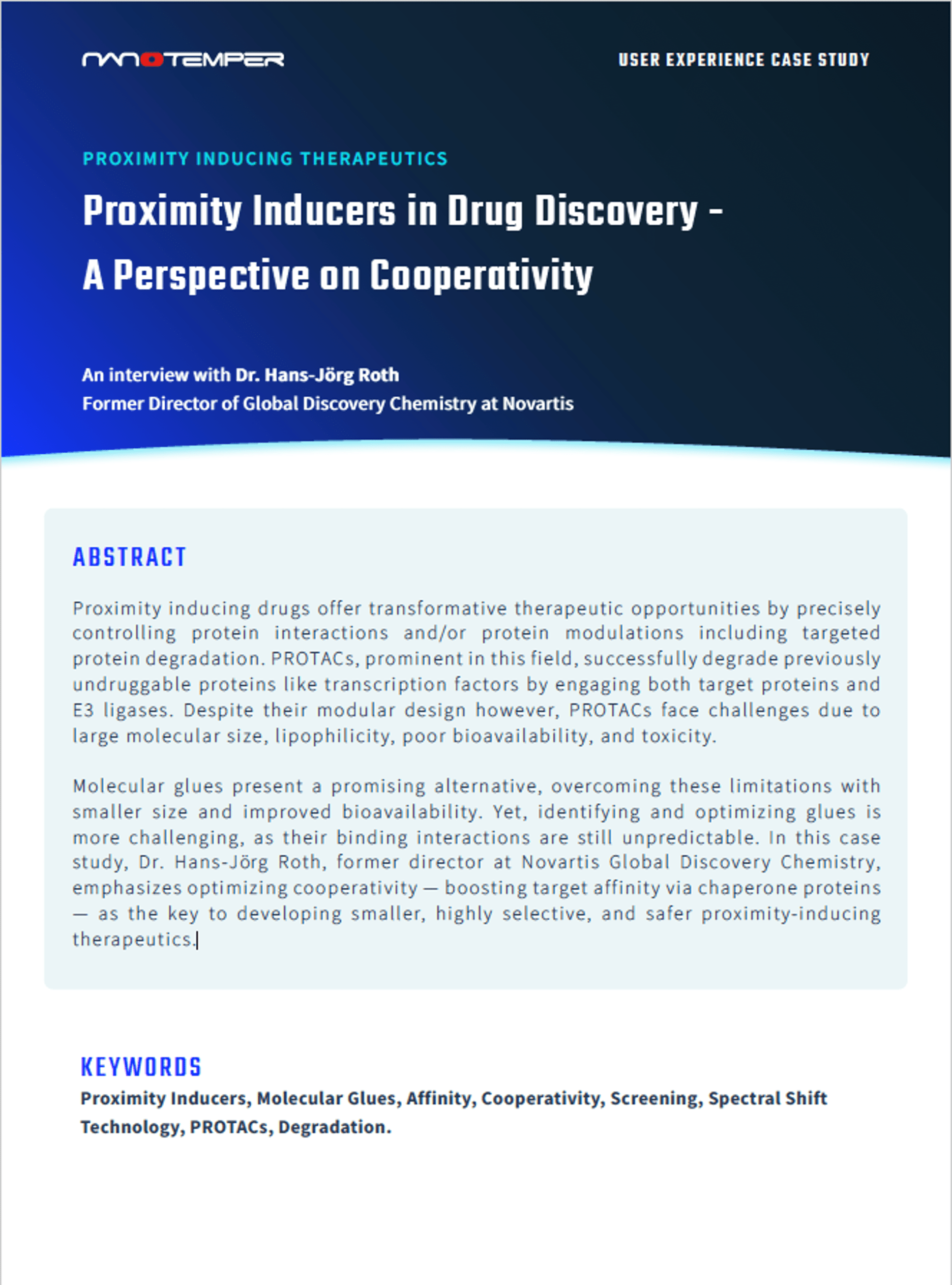In this video, Alessio Ciulli, Ph.D. shows how a PROTAC can “glue” the ligase and the target protein together by forming ternary complexes. He then demonstrates that cooperative, stable, and kinetically long-lived ternary complexes drive faster and more profound protein degradation.
Watch this video to learn the answers to these questions:
- How do PROTACs work?
- Why does the ternary complex matter?
- What defines cooperativity in complex formation?
- How does ternary complex formation inform rational structure-based drug design?
- How can ternary complex optimization help overcome challenges with delivering the PROTAC to the cell?
NanoTemper tools are helping researchers characterize interactions involving PROTACs, molecular glues and other TACs.


















